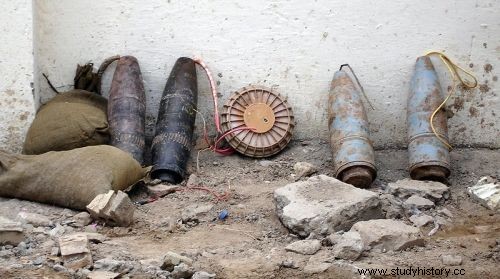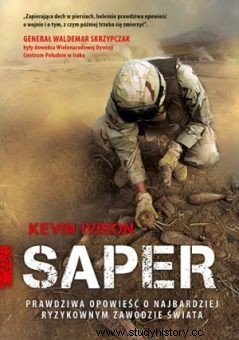Ninety-nine percent boredom and one percent horror - this is how Captain Doug Gregory described the life of a sapper on the first day of the IEDD course. Fiendishly difficult training for a profession where you can only go wrong once.
British Kevin Ivision wanted to become a sapper since he discovered the esteem and admiration that few experts in disarming improvised explosives enjoy. It's a job for Action Man or for James Bond! - he said to himself after hearing a speech from an experienced sapper stationed in Belfast. He himself was only a young soldier, and today he is probably younger than half of our readers. He joined the army at the age of sixteen in 1996. He underwent many years of training, an officer course and the first shift in Afghanistan, before being selected to participate in the IEDD course - disarming improvised explosives after many attempts. What was the training like?
It started with the theory:lectures on the philosophy and principles of IEDD, workshops on the division of duties in a team of sappers, lessons in conducting IEDD operations. Only then were the soldiers sent to a small village. More specifically, a training ground built specifically for the needs of engineers' exercises, pretending to be a village. There were pubs, gas stations and a post office. Ivison even mentioned an improvised car dealership.

Improvised explosives discovered in Iraq in 2005.
There, missions based on real events took place. The course participants were not in danger of dying because the loads were not armed, but they had to face the same problem that their older colleagues encountered in Bosnia or Northern Ireland. The scenarios ranged from dealing with ordinary incendiary charges, such as those constructed by animal welfare organizations, to defusing complex bombs that the IRA planted in the UK.

The most difficult tasks assumed that the terrorists planted additional loads designed to kill the sappers themselves. These workouts: usually ended with the death of the entire team . They were difficult, complicated and required first-rate skills and intuition.
Half of the students - even though they were already the cream of the young soldiers! - she fell off. And that was only the first stage of the training. After two years, Kevin managed to get on a high-risk IEDD course. Only ended up here the most talented sappers, thinking of a career in special forces or an interview. 20% of those who joined the course underwent the course.
We spent many hours wading through streams up rivers or squeezing through sewer pipes - tells Kevin in his memoirs entitled "Minesweeper". - Later in the course, we learned about advanced search techniques. Finding and neutralizing the charges detonated by the victim herself was difficult and required spending many hours in a claustrophobic engineer suit that limited visibility and movement while only protecting us from the smallest charges. Anything bigger than a hand grenade would surely kill us.

Kevin Ivison disarms the mines planted inside the tanker.
Students learned to find loads buried by railroad tracks, hidden under concrete floors and in any environment imaginable. In an urban, rural, dry and humid landscape, at any time of the day or night.
Kevin was one of the few who managed to get through the training, despite the fact that at least once during it ... he blew himself up. Fortunately, with a training load. However, he did not have time to celebrate. As soon as he received his certificate, he was sent to Northern Ireland in the middle of a riot. And from there to Iraq. To a place that turned out to be hell on earth. But that's a topic for another article.
Source:
- Kevin Ivison, Minesweeper. A true story about the most risky profession in the world , Character Literanova 2013.
